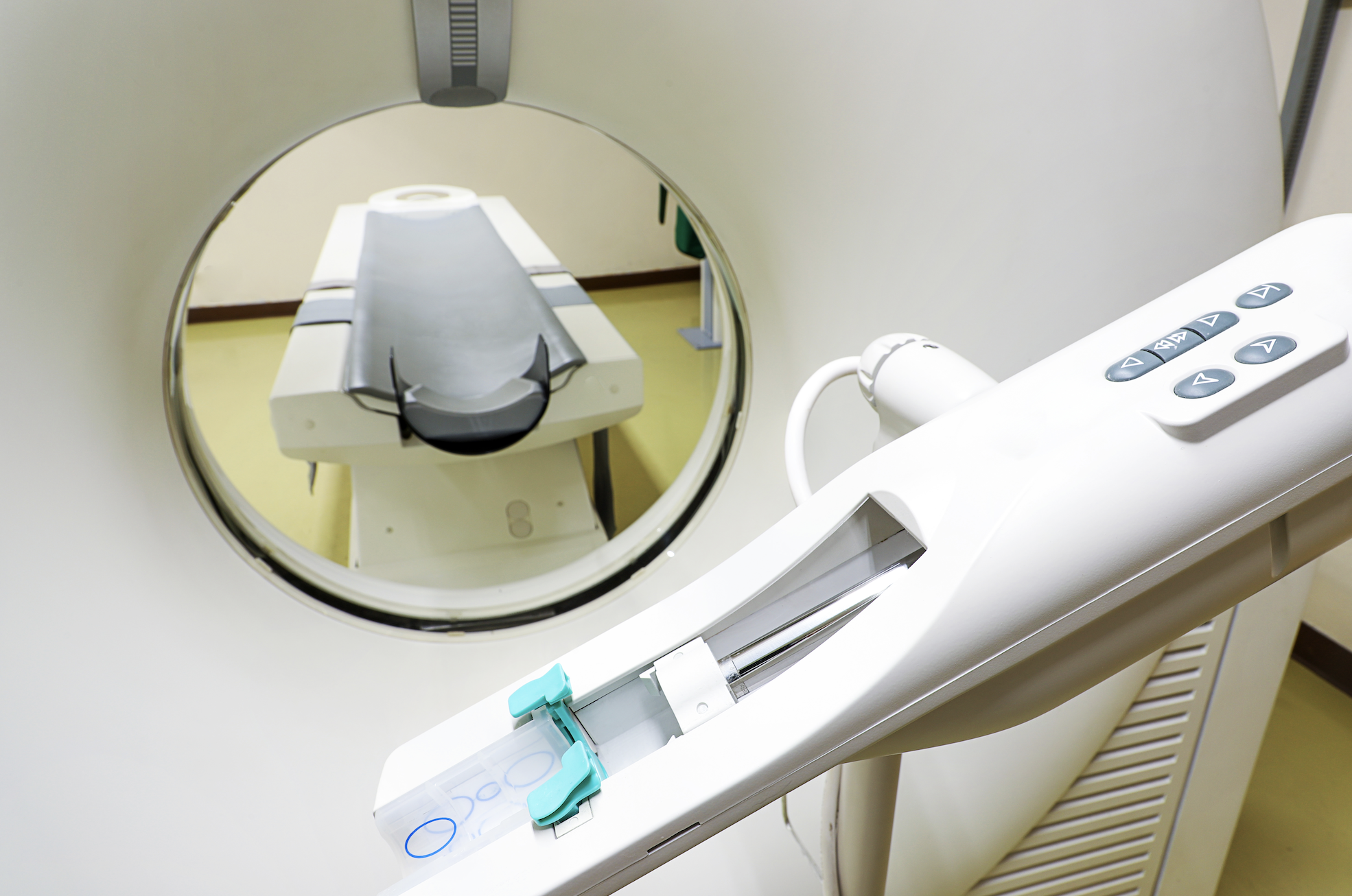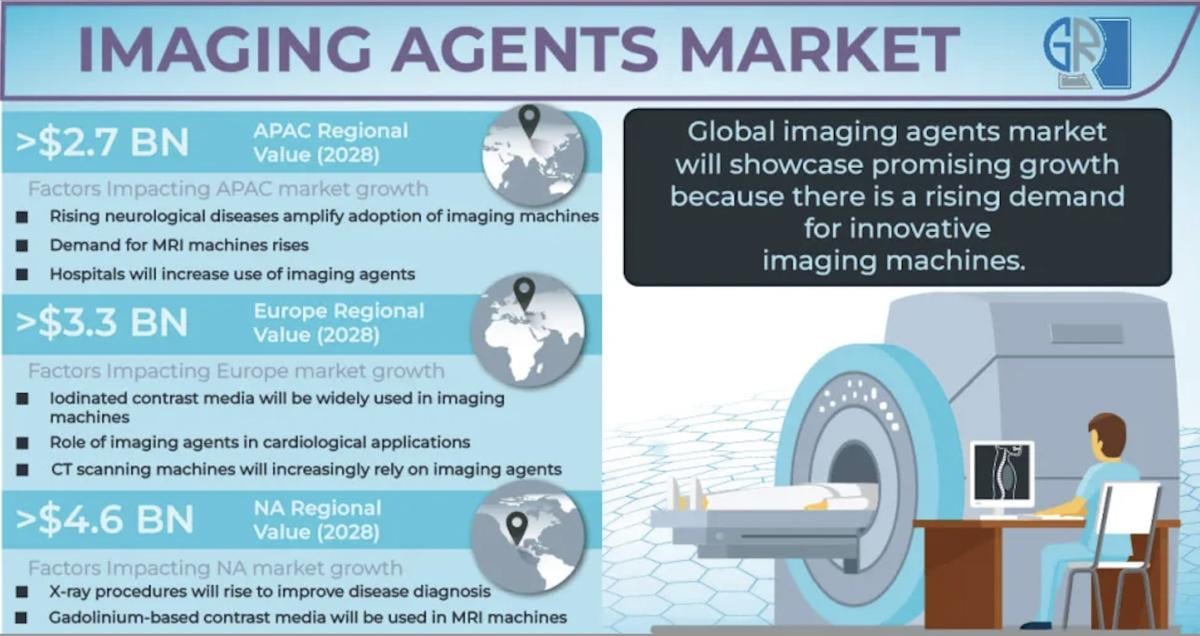
According to a recent study from market research firm Graphical Research, the global imaging agents market size is set to register a significant growth during the forecast timeframe, due to rising demand for innovative imaging systems. Devices like computed tomography (CT) and magnetic resonance imaging (MRI) are widely used by medical professionals to get detailed images of tissues and bones for better diagnosis. Below mentioned are some of the key trends expanding global industry size spanning from 2022 to 2028.

Europe (regional valuation will exceed USD 3.3 billion by 2028)
North America
The North American regional valuation is set to exceed $4.6 billion by 2028.
X-ray procedures will rise to improve disease diagnosis. North America imaging agents market size from X-ray will observe a 4.7% CAGR through 2028. X-ray machines are one of the most valuable medical tools because they are used to conduct a wide range of procedures and examinations. The COVID-19 pandemic increased the use of X-ray machines significantly because they were useful in detecting COVID-related lesions in a patient’s lungs.
Gadolinium-based contrast media will be used in MRI machines. North America market revenue from gadolinium-based contrast media touched $458 million in 2021. MRI systems are widely used to generate detailed pictures of tissues and organs. The region is noticing a considerable rise in cases of multiple sclerosis, brain tumors, stroke, traumatic brain injury and epilepsy, further bolstering the demand for gadolinium-based contrast media.
Iodinated contrast media will be widely used in imaging machines. Europe imaging agents market revenue from iodinated contrast media reached $1 billion in 2021 because of the robust use of CT and X-ray systems. Non-ionic stable iodinated imaging agents are also readily available, which can improve the quality of diagnosis.
Angioplasty procedures are rising across the region due to the presence of a vast geriatric population. According to the British Heart Foundation, around 250,000 coronary angiograms are performed in the U.K. each year. Iodinated contrast media are used in a variety of indications, such as neurological, nephrological, gastrointestinal, cardiovascular, musculoskeletal and cancer.
Role of imaging agents in cardiological applications. The cardiology segment captured 30% of Europe industry share in 2021 due to the growing incidence of cardiovascular diseases (CVDs) across the region. As per the European Heart Network, nearly 3.9 million patients die from CVD in Europe alone, while the European Union (EU) records 1.8 million deaths every year. Frequent smokers are exposed to different types of pollutants, increasing their risk of contracting CVD. Unhealthy lifestyles will fuel the need for imaging agents to screen potential patients.
CT scanning machines will increasingly rely on imaging agents. The CT segment held more than 25.6% of Europe imaging agents market share in 2021. Contrast agents used in CT scans are responsible for developing high-quality 3D structural images. CT procedures mainly use iodinated and barium-based contrast media. When imaging agents, such as iodine and barium are injected into a patient’s body, they block out the X-rays, creating detailed images of organs, blood cells, and other tissues. These qualities will augment the demand for CT scanning devices to enable a high-quality diagnosis.
Asia Pacific
The Asia Pacific regional valuation is anticipated to surpass $2.7 billion by 2028.
Rising neurological diseases amplify adoption of imaging machines. Asia Pacific imaging agents market size from the neurology segment will showcase a 5.2% CAGR through 2028 because the region is witnessing a rise in Alzheimer’s disease cases. According to the Alzheimer’s and Related Disorders Society of India (ARDSI), in 2020, around 5.3 million individuals over 60 years old were diagnosed with dementia in India.
Molecular imaging is preferred in such cases because it can offer detailed images of the body at molecular and cellular levels. Positron emission tomography (PET) and single-photon emission computed tomography (SPECT) are some of the imaging tools majorly used to detect physiological changes, which can help identify central nervous system disorders.
Demand for MRI rises. The MRI segment will capture around 13.6% of APAC imaging agents market share by 2028. Magnetic resonance imaging is a non-invasive imaging technology that scans and generates detailed images of organs and tissues. It is popularly used to detect brain injury, multiple sclerosis, epilepsy, stroke and infections across specialty centers and diagnostic laboratories. Product sales will increase because MRI systems rely on imaging agents to accurately detect and diagnose a medical condition.
Hospitals will increase use of imaging agents. Hospitals held more than 42% of Asia Pacific imaging agents market share in 2021 due to the growing use of innovative diagnostic technologies to detect and diagnose various diseases. The overall network of hospitals is also expanding at a notable rate across the region.
Emergency rooms at hospitals offer high-quality care to patients who have experienced extreme health conditions, such as excessive bleeding, stroke, trauma, and dangerous infections, driving the adoption of imaging agents to accurately diagnose such problems.

Shankar Khatkale is Team Lead-SEO at Global Market Insights, Inc., a market research and strategy consulting that offers comprehensive market research reports with in-depth market data and analysis.
Related Content:
Rapid Growth Predicted for MRI Contrast Agents Market
Magnetic Resonance Imaging (MRI) Contrast Agents Market
Contrast Use in First Transthoracic Echocardiogram for Heart Failure Reduces Repeat Testing


 December 05, 2025
December 05, 2025 









